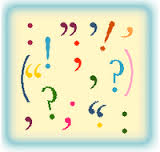



It’s smack dab (almost) mid-August, which means … time once again for our semi-annual update on what’s new on MUF’s For Teachers and Librarians page!
Here’s an overview of three great new resources and links we’ve added: (you’ll find them marked with New! on the For Teachers/Librarians page):
In the section, BLOGS (of special interest to teachers and librarians):
Top Teaching Blog by Scholastic: Well regarded as a resource for literacy professionals everywhere, Scholastic also offers teacher-to-teacher support through the Top Teaching Blog. Eight innovative teachers bring you right into their classrooms for ideas on how to enhance middle graders’ literacy experiences. Even though summer is quickly waning, you’ll get some great ideas from team member Shari Edwards in this post: a challenge to herself to read a children’s book a day.
A Year of Reading: Franki Sibberson and Mary Lee Hahn are classroom teachers and authors of acclaimed professional books on literacy. Their blog is rich with ideas and resources for bringing middle grade readers and good books together! Check out Franki’s thoughts on selecting that all-important first read aloud of the school year.
Finding Common Themes in Fiction Texts: 3rd grade teacher Beth Newingham offers a wonderful array of strategies and resources (downloadable posters!) to help you guide middle grade students to find and learn from the themes in good books. This is a rich site from Beth’s classroom in Troy, Michigan — take your time and dig in! Beth is also part of Scholastic’s Top Teaching Blog team, so we encourage you to visit her there as well!
We invite you to share your new favorite teacher and librarian middle grade resources in the comments section below!
I’m sure you’ve all seen it by now. The terrific video of kids reacting to the recent Cheerios ad featuring a multi-ethnic family.
Despite the racist backlash the commercial (which features a white mother and African American father) initially garnered, what these children so eloquently express is the sheer ordinariness of multi-ethnic families in their world. What I love about this video is the “um, yea, so what?” quality of most of the kids’ reactions. There’s a lot we adults can learn there.
And indeed, that is the strength of stories — be they in the media or in middle grade books — which make race and ethnicity a real factor in characters’ lives but not necessarily a central ‘problem’ to be ‘addressed.’ Such stories represent the real faces of real families, and reflect the beauty of our diverse world. More importantly, they allow all our children to see themselves in the stories around them.
The U.S. is becoming and increasing multicultural place – and multiethnic families are everywhere — from East to West Coast, from Topeka to Tallahassee. It is the reality of my children’s lives and so many other children from families like ours. It’s a joy to find increasing images of multi-ethnic families in the media, and of course increasing numbers of books where having multiple languages, multiple types of food, multiple skin colors, and multiple histories in one family aren’t an anomaly, but a given.
So I thought I would dedicate this post to middle grade stories which celebrate multi-ethnic families. For more great titles check out these posts at Shen’s books , Cynthia Leitich Smith’s great blog and this blog by me at Three Sisters Moving Village on multi-ethnic characters in children’s and YA novels.
Geeks, Girls and Secret Identities by Mike Jung: Features a cast of multi-cultural kids including heroine Polly Winnicott-Lee, who is not just multi-ethnic, but a super hero!
Bobby vs. Girls (Accidentally) by Lisa Yee: Whose hero, Robert Carver Ellis-Chan, has a Chinese American mother and white, ex-pro-football player father. Race is an incidental in this fantastic story, hardly a central ‘problem.’
Monsoon Summer by Mitali Perkins: Jasmine (Jazz) Gardner has a white Father and Indian American mother, and reluctantly heads off to India for the summer with her family.
Wonder by RJ Palacio: August Pullman’s mother is Brazilian and father is Jewish of Eastern European descent. Dealing with his facial deformity is far more pressing in the story than his mixed ethnic identity.
The Red Pyramid by Rick Riordan: In Riordan’s popular Kane series, Carter and Sadie Kane are the children of an African American archaeologist father and white British mother. While Riordan explicitly discusses how the children (one of whom looks more white, the other more African American) are differentially treated by society, the adventure is the driving force of this story!
The Whole Story of Half A Girl by Veera Hiranandani: Like the author herself, the heroine, Sonia, is Jewish-American and Indian-American, and must negotiate the complexities of a new middle school.
What are some of your favorite stories featuring multi-ethnic families?